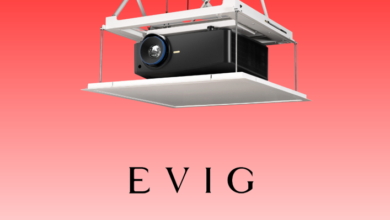Understanding LED Auto Headlights and Leading Manufacturers in the Industry

As the automotive industry evolves, lighting technologies have undergone significant transformations. One of the most impactful changes is the adoption of LED (Light Emitting Diode) technology in vehicle headlights. LED headlights are now a standard or premium feature in many vehicles due to their superior performance, efficiency, and design flexibility. This article explores the technical advantages of led auto headlights, the current trends in the market, and the leading LED headlight manufacturers shaping the future of automotive lighting.
The Evolution of Automotive Headlights
Traditionally, halogen bulbs were the most common type of headlight used in vehicles. Though cost-effective, halogen lights have several drawbacks, including lower brightness levels and a shorter lifespan. High-intensity discharge (HID) lights offered an improvement in terms of brightness and efficiency, but they still fell short in several areas, including warm-up time and complexity.
LED headlights emerged as a game-changer. Initially used for daytime running lights and tail lights, LED technology gradually made its way to headlight systems due to continuous innovation and demand for better performance and aesthetics. Today, LED headlights are prevalent in all vehicle segments, from economy cars to luxury sedans and high-performance vehicles.
See also: The Rise of Online Resume Creators: Revolutionizing Job Applications with Video Animation
How LED Headlights Work
LEDs emit light when an electric current passes through a semiconductor. Unlike halogen or HID bulbs, which rely on heating a filament or igniting gas, LEDs produce light more efficiently and with less heat. Their compact size allows for innovative and stylish headlight designs, including matrix LED and adaptive lighting systems that adjust beam patterns dynamically.
The primary components of an LED headlight system include:
- LED chips: Emit the light when powered
- Heat sink or cooling system: Maintains optimal operating temperature
- Driver circuitry: Regulates power to ensure consistent brightness
- Lenses and reflectors: Focus and shape the light beam
Advantages of LED Auto Headlights
There are several reasons why LED headlights have become the preferred choice for many automakers and consumers:
- Energy Efficiency: LEDs consume significantly less power than halogen or HID lights. This efficiency contributes to better fuel economy and lower emissions, especially in electric and hybrid vehicles.
- Longer Lifespan: LED headlights can last up to 25,000 hours or more, compared to about 1,000 hours for halogen bulbs. This longevity reduces maintenance costs and the frequency of replacements.
- Superior Brightness and Clarity: LED headlights provide a bright, white light that closely resembles daylight. This enhances visibility and safety, particularly at night or during adverse weather conditions.
- Instant On/Off: LEDs achieve full brightness immediately, unlike HIDs which require a warm-up period.
- Compact and Flexible Design: The small size of LED units allows designers to create innovative lighting signatures and integrate advanced features such as adaptive beam control and automatic high beams.
- Lower Heat Output: Although LEDs still require cooling mechanisms, they produce less heat compared to traditional bulbs, improving durability and safety.
Challenges in LED Headlight Manufacturing
Despite the many advantages, manufacturing LED headlights presents unique challenges. Precision engineering is crucial, as even slight misalignments can affect beam pattern and performance. Thermal management is another critical factor; overheating can degrade the LED chips and reduce their lifespan.
In addition, LED headlights must comply with stringent regulations regarding beam intensity, pattern, and glare to avoid blinding oncoming drivers. Manufacturers must invest heavily in R&D and quality control to ensure their products meet international standards and consumer expectations.
Leading LED Headlight Manufacturers
Numerous companies around the world specialize in producing LED headlights and components for the automotive industry. Below are some of the most prominent manufacturers known for innovation, quality, and reliability:
OSRAM Continental
A joint venture between OSRAM and Continental, OSRAM Continental combines lighting and electronics expertise to develop advanced LED headlight systems. Their portfolio includes matrix LED, laser, and adaptive headlight technologies used by major automakers worldwide.
Hella
Hella is a global leader in automotive lighting and electronics. The company provides OEM LED headlights for many vehicle brands and invests heavily in developing smart lighting systems that adapt to road and traffic conditions.
Stanley Electric
Based in Japan, Stanley Electric is a key supplier of LED lighting systems for vehicles. The company collaborates with major Japanese and international car manufacturers, focusing on energy-efficient and environmentally friendly solutions.
Koito Manufacturing
Koito, also from Japan, is one of the largest automotive lighting manufacturers globally. The company produces LED headlight systems that combine performance, durability, and design excellence, serving clients such as Toyota, Honda, and Nissan.
Valeo
A French automotive supplier, Valeo is known for its innovations in LED lighting, including adaptive and matrix beam systems. The company works with numerous European and global car manufacturers to deliver high-performance lighting solutions.
ZKW Group
ZKW Group, a member of the LG Group, specializes in premium headlight systems, including LED and laser headlights. The company supplies luxury brands such as BMW, Audi, and Mercedes-Benz.
Philips Automotive Lighting
A division of Signify, Philips is a well-established brand in automotive lighting. Philips offers a wide range of LED headlight bulbs for both OEM and aftermarket applications, known for their reliability and ease of installation.
Nolden Lighting
A German-based company, Nolden Lighting focuses on designing and manufacturing premium LED lighting systems for the automotive and motorcycle industries. Their products are known for their distinct designs and high performance.
Emerging Manufacturers and OEM Suppliers
As demand for LED headlights grows, new players are entering the market, particularly in China and other parts of Asia. These emerging manufacturers offer competitive pricing and rapid innovation, making them attractive partners for carmakers and aftermarket suppliers.
Guangzhou Teehon Electronics
Teehon is a Chinese manufacturer specializing in LED auto lighting, including headlights, fog lights, and off-road lighting. They offer OEM and ODM services for international clients.
Shenzhen Aurora Technology
Aurora is known for producing high-performance LED lighting products for off-road and automotive applications. Their LED headlights are used in both consumer vehicles and specialty vehicles.
Changzhou Xingyu Automotive Lighting Systems
A rapidly growing company in China, Xingyu focuses on high-quality automotive lighting systems and collaborates with both local and global car manufacturers.
Sanmak Lighting
Another Chinese manufacturer, Sanmak is recognized for LED off-road lighting and headlight systems designed for durability and high output. They serve markets in North America, Europe, and Asia.
Trends in LED Auto Headlight Technology
The future of LED auto headlights is shaped by continued innovation and integration with vehicle electronics and driver assistance systems. Here are some emerging trends:
- Matrix LED Headlights: These systems use an array of LED units that can be individually controlled to shape the light beam and avoid dazzling other drivers.
- Laser-LED Hybrid Systems: Combining laser and LED technology, these systems offer extremely bright and long-range illumination while remaining energy efficient.
- Smart Headlights: Integrated with cameras and sensors, smart headlights adjust automatically based on road conditions, traffic, and weather.
- Digital Light Projection: Some advanced systems can project symbols or guidance onto the road surface, enhancing communication and safety.
- Customization and Aesthetics: LED technology allows for more creative and distinctive headlight designs, enabling brands to develop unique visual identities.
LED Headlights in the Aftermarket
In addition to OEM suppliers, there is a booming aftermarket for LED headlight upgrades. Many vehicle owners replace their halogen or HID systems with LED bulbs to improve visibility and aesthetics. However, it is important to choose quality products that comply with local regulations and provide a proper beam pattern.
Popular aftermarket brands include:
- Auxbeam
- Fahren
- Cougar Motor
- Sealight
- Beamtech
Consumers should ensure compatibility with their vehicles and verify certifications such as DOT or ECE approval before making a purchase.
Conclusion
LED auto headlights have revolutionized vehicle lighting, offering unmatched efficiency, longevity, and design flexibility. As technology advances, led headlight manufacturers are becoming more intelligent, adaptive, and visually distinctive. Leading manufacturers continue to invest in research and development to push the boundaries of what automotive lighting can achieve.
From global giants like Hella and OSRAM Continental to emerging innovators in China, the LED headlight market is dynamic and competitive. Consumers and carmakers alike benefit from a broad range of options tailored to performance, design, and budget needs. As the automotive industry shifts toward electric and autonomous vehicles, LED headlights will remain a critical component of both safety and style.





